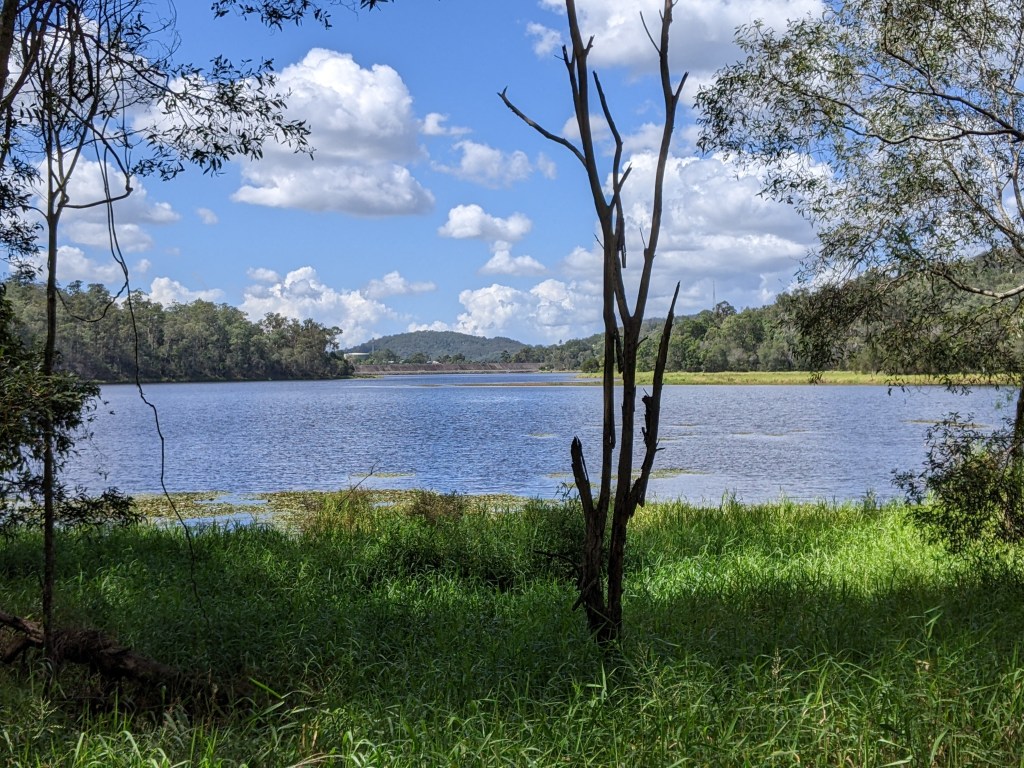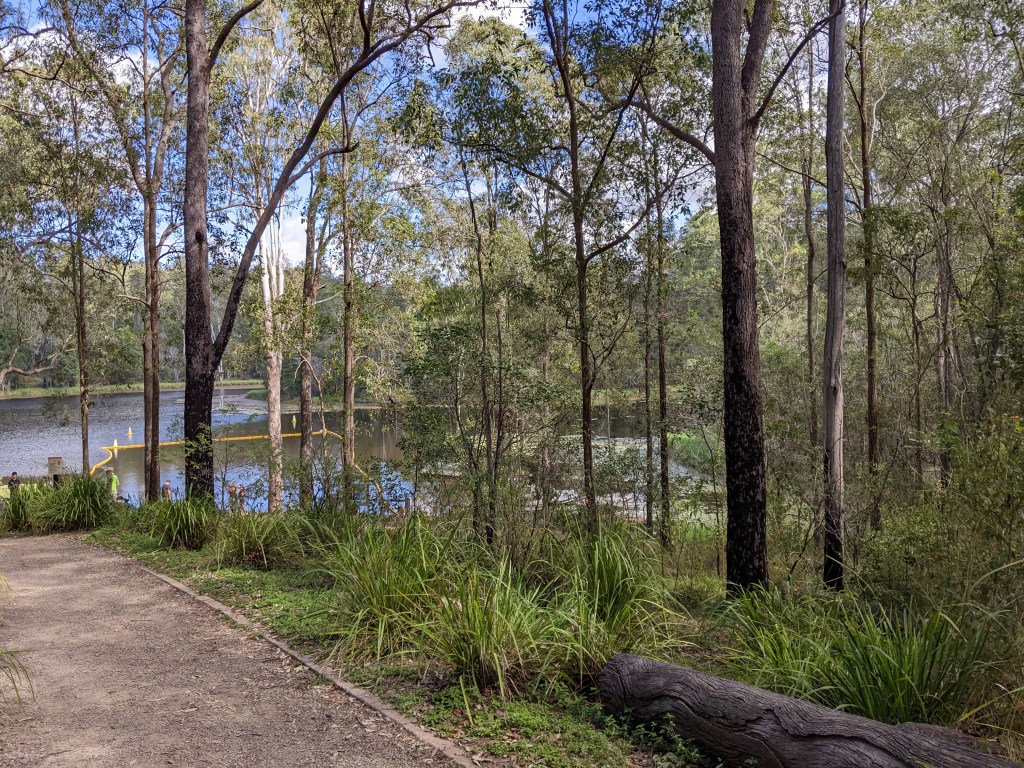nature
Regulation Punishment: Exploring the D’Aguilar National Park (Part 1)
Of all the good things my new home in Brisbane has to offer, the D’Ag is probably the best.
A boot-shaped strip of bushland whose toe has a hold in the city’s western suburbs and whose top touches on the southern fringes of the Sunshine Coast Hinterland, the D’Aguilar National Park sports the usual array of natural sights and sounds, native plants and animals.
According to the experts, visitors can expect to experience rugged gorges, rock pools and rainforests, not to mention bopple nut trees, Hiller’s snub-nosed katydids and Mount Glorious torrent frogs.
Okay, so maybe not the frogs, torrents of which there are not. (The species hasn’t been seen since 1979.)
In fact, the least interesting thing about the D’ag is its name. Situated on land traditionally owned by the Jinibara people, the park bears – with awful irony – the name of George D’Aguilar, the author of Regulations and Punishments of the British Army, a best-selling textbook from the early 1800s.
Three hours into our walk around the Enoggera Reservoir, a lake located at the tip of the park’s toe, this seemed all too appropriate: me and my family were experiencing the regulation punishment – the pain that usually accompanies such expeditions.

We set out just after ten on a Saturday morning, me, my wife, and our son (13) and daughter (9), driven by my sudden desire to get back to nature and by my wife’s love of bushwalking.
Despite a few difficulties, the ensuing seven-kilometre hike had its highlights.
Early on we narrowly missed being mobbed by a wave of water-borne tourists.

The track wove its way through trees aplenty – some wearing wasps’ nests like bumbags and others playing dress-ups with ‘grandfather’s whiskers’ (a kind of moss).

At times we wondered for whom the bell birds tolled, for toll they did.
We kept catching tantalising glimpses of our destination – the dam wall.

We stopped for lunch – bread, cheese, relish, grapes and nuts – in a shady grove not far from Enoggera Creek itself. Several groups of walkers went by, and the kids begged me (in vain) not to greet each one with my joke of the moment: ‘Ah, there you are – just in time for lunch!’
Back on the track, we day-dreamed about swimming across the lake’s narrowest arm, but the shore was choked with water lilies.

Around one bend we witnessed wildlife of a different kind: teenage boys swinging from the trees.

And then, at long last, we reached our destination – the ‘damn’ wall. As big as it was, it couldn’t contain our relief.

The worst, however, was yet to come.
Stumbling into the park’s ‘Discovery Centre’, we discovered that the café was about to close. For a moment we faced an uncertain future – one averted by take-away milkshakes and a long-awaited swim.
We’d made it!
Lolling by the lake, the trials and tribulations of our walk already half-forgotten, we vowed we’d return to explore more of the park.
Well, I did.

Seeing Things Feelingly: Books, Climate Change and Me
Books – they’re a man’s best friend. Patient and eager to please, they lead us into the light.
I realised this recently while convalescing at home, the victim of an illness less of body than mind.
It started with a familiar feeling: I wanted to write – desperately, truly, madly – but I didn’t know what. As I sat and pondered the options, my eye fell on a magazine I’d been reading whose theme is topical.
Climate change.
Okay, I thought, here’s my chance to take a stance on a hot button issue, on the most pressing problem, they say, of our age.
So I settled back to give it some thought.
Gazing out at the clouds racing across the sky – as if I could see the climate changing and not just the weather – I tried to make sense of my impressions.
I’m aware, first of all, of the scientific argument, neatly stated by NASA:
The planet’s average surface temperature has risen about 1.62 degrees Fahrenheit (0.9 degrees Celsius) since the late 19th century, a change driven largely by increased carbon dioxide and other human-made emissions into the atmosphere.
I know, too, of the consensus in scientific circles, the one in which ninety-seven percent (to be precise) of actively publishing climate scientists agree that ‘climate-warming trends over the past century are extremely likely due to human activities’.
The evidence, I realised, should sway me, should spark outrage and action. And yet it doesn’t.
Then I remembered the news reports I’d read, the articles about displaced polar bears, besieged Pacific Islanders and smoke-swathed city-dwellers. Surely they tugged at my heart-strings?
Only a little. Truth be told, I sympathise with the sufferers without being truly touched.
Feeling sick at heart – am I some kind of monster? – I turned away from the window.
In desperation I looked to my bookshelves where, like a dog in waiting, one work leapt out at me: Peter Watson’s Ideas, a history of ideas ‘from fire to Freud’.
Unable to locate ‘climate change’ in the index, I turned at random to the chapter on romanticism. And there, in a book bought fifteen years ago but barely opened since, I found what I was looking for.
The real aim of romanticism, the underlying aim, had been set forth by Keats, who wrote poetry, he said, to ease ‘the burden of the mystery’ . . . Whereas the scientists tried – or hoped – to explain the mystery, the romantics relished it, made the most of it, used it in ways that many scientists could not, or would not, understand.
So, I thought with relief, I’m a romantic.
I mean, the signs are all there.
In my view the world can’t be analysed or fully explained; it can only be experienced directly or seen through a glass, darkly, reflected in the workings of the human mind.
Nature to me is more metaphor than model, even if the metaphor often used is that of a model. ‘We live in a world we create ourselves,’ the philosopher-poet, Johann Herder, once observed. (Herder him?)
Only the arts, I reckon, can ‘ascend to bring light and fire from those eternal regions where,’ Shelley wrote, ‘the owl-winged faculty of calculation dare not ever soar’.
I’ve said as much in a song:
You can cut it all up
And weigh it all out
But when you put it together again
You leave the meaning outYou can test all the theories
Check all the facts
And still the truth
Gonna slip through the cracks(Nothin’ Adds Up)
Clearly I can’t rely on rationalists – scientists and journalists – to help me make sense of the world: they simply don’t speak my language. I have to look elsewhere for help.
Short of ideas, I turned back to the bookshelf.
This time a play jumped out of the pack: Shakespeare’s King Lear, a story wracked by a fabulous storm. I opened my Arden edition and began to read. Before long I found what I was looking for: ideas and images that made my impressions much clearer.
In Lear the heavens are in tumult because human affairs have fallen into disarray.
‘Nature finds itself scourg’d by the sequent effects,’ the Earl of Gloucester declares.
Love cools, friendship falls off, brothers divide: in cities, mutinies; in countries, discord; in palaces, treason; and the bond crack’d ‘twixt son and father.
Deceived by the fine false words of his two eldest daughters, Lear spurns the one who truly cares but flatters him not.
‘I love your Majesty/According to my bond,’ Cordelia tells him, ‘no more nor less.’
Having broken this bond, Lear is lost; assailed by wild and stormy weather, he wanders the heath, succumbing to madness. Later, when Cordelia is murdered, he dies.
Are we too doomed, I wondered. After all, aren’t we destroying that which sustains us, just like Lear?
But then I pondered the sub-plot of the play, which seemed to say something more. Can we not, I thought, take heart from Gloucester’s fate?
Blinded by egotism – he too has betrayed his one true child – the remorse-ridden Earl is led to the ‘brim’ of a cliff at Dover, where he leaps but does not fall, the actual edge of the precipice being a little way off. Thus is he reunited with his son.
Earlier on Gloucester had, with astonishing insight, given voice to my feelings.
‘Heavens, deal so still!’ he cried,
Let the superfluous and lust-dieted man,
That slaves your ordinance, that will not see
Because he does not feel, feel your power quickly
Greed, profligacy, heartlessness – is it any wonder nature rises against us?
Then, finally, there is Gloucester’s other implicit assertion: that by seeing things feelingly we can reconcile rationalism with romanticism and come to more fully appreciate what we have. This, and a little luck, might keep us one step ahead of oblivion – assuming, of course, that we are perched merely on the ‘brim’ of the precipice and not on its outermost edge.
Feeling better, I took my dog for a walk, safe in the knowledge that books are surely a man’s best best friend. For, unlike our furry favourites, literature guides us through dim thickets of thought and out into the light of the world, the one true home of humanity.